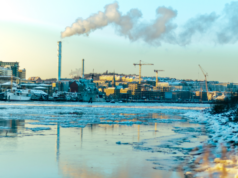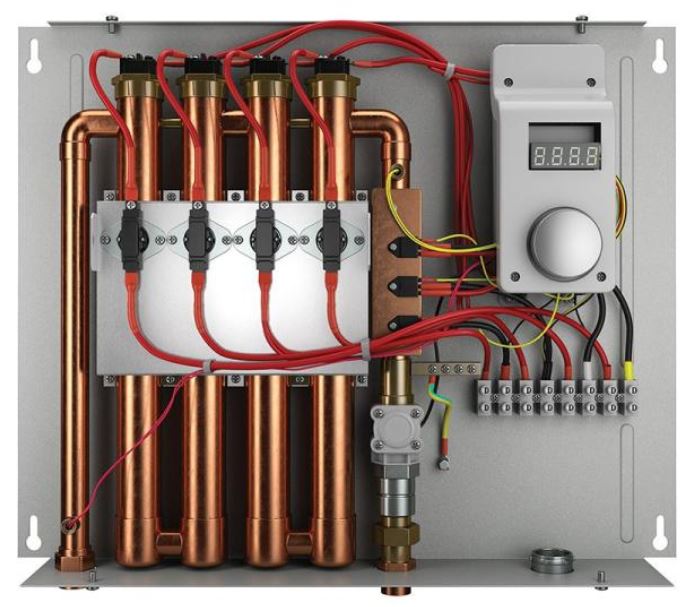
In this publication, we will address the topic of finding the best electric tankless water heater and provide some preliminary information you must consider before purchase.
To start, the water heater makes up for about 20 percent of the average household’s energy bill. Eighty percent of the energy used by dishwashers and washing machines is done so to heat the water, and only 20 percent is used for facilitating the actual mechanical movements. 99% of the energy used by showers and baths is done so to heat the water.
When cold water enters the premises of your home from the municipal supply, it is split into two directions – one where the cold water goes to the taps in the plumbing fixtures and the other heads directly to the water heater.
The traditional tank water heater is very wasteful because it holds a large amount of hot water when it is not being used. During this time of non-use, heat seeps out of the insulation, and extra energy is required to reheat the water. This loss of heat is often referred to as a standby loss.
There are also recirculating loop water heating systems that seem to have a storage tank. However, a distribution loop pumps the water continuously so that someone requiring water has it when they need it. There is also a standby loss with recirculating loop water heaters, and tankless systems are intended to solve this problem.
Some has suggested that electric storage tank heaters are more efficient than gas tank heaters, but the problem does not lie with the energy source as it has to do with the storage element. It should not matter when your water is heated but rather that it is hot when you need it. A tankless water heater is an on-demand system, so water is only heated when it is required by the consumer, there is no storage of pre-heated water. There are two types of tankless water heaters; electric and natural gas models.
Electric tankless water heaters use electrical energy and convert it into heat whereas natural gas models use heating elements in the form of a heat exchanger. Gas models need an exhaust vent to shoot out the flue gases that are formed from hot combustion. They also need a gas line, adequate space, and access to combustion air. They are generally twice as expensive compared to their electric counterpart and use natural gas – which is a non-renewable fossil fuel.
Heating Ability
The rate at which water flows is measured in ‘gallons per minute.’ As the number of requested gallons per minute increases the tankless heater’s ability to warm-up the water decreases. Therefore, if multiple people are taking a shower in a house, they will feel a lack in the warmth of the water because there is a high-water flow rate.
Another factor that affects the heating ability of the tankless water heater is the incoming temperature. For instance, residential dishwashers and showers require water temperature to be about 120 degrees Fahrenheit. And if the incoming temperature of the water from the municipal supply is 60 degrees Fahrenheit, the heater will need to warm the water by an additional 60 degrees to meet the demand.
Why are Tankless Water Heaters Not as Common?
Tankless water heaters have been used in Europe for a long time, and 50 percent of households in Greece rely on one, 35 percent in Sweden, and 13 percent in Finland. That number drops significantly once you approach the western countries with the United Kingdom having a 1 percent usage ratio.
Perhaps the reason that tankless water heaters are not as common is due to their lack of recognition. There are also some challenges associated with them. For example, demand from multiple fixtures within a household can lead to a shortage of warm water. Individuals within the home would have to take a shower or use other appliances one at a time. This can be an inconvenience.
Furthermore, conventional tank heaters don’t deplete themselves of hot water can meet peak demand periods relatively effectively. The one scenario which happens on a rare occasion is when the tank of hot water gets used up before it can refill itself. This is the reason why sometimes you may have to wait for the water to reheat before you can take a bath or shower.
The obvious solution to the problem of limited flow rate heating is to install multiple electric tankless water heaters at point-of-use. For example, you could install one tankless water heater beside the washing machines and have another for general use such as the dishwasher and bathtubs. A whole-house installation for an electric tankless model can heat about 4 gallons of water per minute. Gas tankless water heaters can achieve a GPM of 1.5x the average electric model can. However, if you have a small family or are a couple, you can save energy on your utilities by opting for a suitable electric tankless water heater.
Another factor that affects the commonality of these water heaters is that they often have minimum flow rate requirements that exceed the maximum flow rate of the fixture. For example, if a faucet flows water out the tap at a rate of 0.5 GPM and the tankless water heater requires a minimum GPM of 0.8 then there will not be any hot water supplied to that faucet. There are no flow requirements with traditional tank water heaters.
Moreover, tankless water heaters suffer from an exponential decay issue in the sense that the water is hottest after it activates at the minimum flow rate and as the flow rate increases the overall temperature of the water decreases. An electric tankless water heater can be very effective at supplying smaller amounts of hot water fast but will only provide large amounts of water that is warm. There is also the danger of being scalded by hot water because these heaters can warm up fluid to a near boiling point temperature. The solution to this problem is to choose a heater with a modulating function that creates a temperature consistency for different flow rates. In this case, you would need to set the desired outgoing temperature, and the heater would warm the water to that request. Electric tankless water heaters modulate water far more effectively than the combustible gas models do.
Regarding installation, you would need an electrician to install it for you. It usually requires an upgrade in electric service which involves changing gauge wires — affixing a circuit breaker to allow higher draw of current, more advanced meter loop, and a bigger main panel.
Electrical and Other Considerations
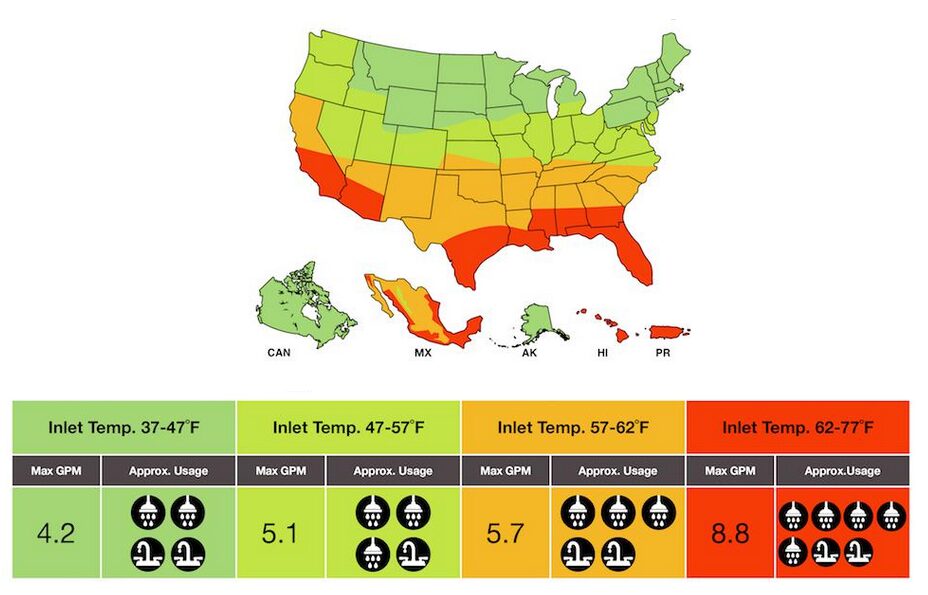
The average tankless water heater that is powered by electricity will consume 588 watts per minute given that it has a flow rate of 4GPM. Kilowatt rating requirements can reach up to 28kW whereas electric storage water heaters only use about 5Kw. It may seem by these numbers that tankless electric water heaters use up more electricity, but storage heaters are constantly working around the clock, but tankless models only consume energy when the water faucet is turned on. On average, homes have 150 amps of electrical service, but this is usually not enough for the tankless water heater because you’ll need more depending on your setup and hydro company’s capacity.
It is also important to pay attention to the water that is temporarily stored in the pipes that connect to the faucet. These pipes also contain insulation and hold a decent amount of water so that there is little to no delay in receiving water when the tap is switched on. However, if you are using the sink to collect a cup of hot water, it is always best to warm the water in the microwave as opposed to waiting for the water stream to turn warm. You may also want to consider point-of-use tankless water heaters because there is little to no stranded hot water left remaining in the pipes.
Remember, the whole point of a tankless water heater is to lower the energy lost through standby. Therefore, there is more benefit to tankless water heaters for those households that have low water usage than high water usage. If there are higher volumes of water used in various timeframes, then it is best to stick to a storage tank water heater because there is little to no standby in that situation.
It has been proven that electric tankless water heaters have a greater energy factor than competing traditional gas-fired storage tank water heaters. The energy factor is a measure of energy efficiency and the higher the value, the more efficient the water heater. The number for tankless water heaters is generally around 0.90 and is made up of cycling losses, standby losses, and recovery efficiency.
Cycling loss is the amount of heat lost as water circulates through the pipes and tank. Recovery efficiency is how efficiently the heat transfers to the water. Standby loss as we explained before is the amount of heat lost each hour from a storage tank.
Most electric tankless water heaters use between 110 to 120 volts for smaller capacity models and around 230 volts for larger capacity systems. Every electric tankless water heater should ideally have its circuit breaker installed on the service panel.
Electric tankless water heaters are expected to last between 15-20 years whereas the service life of storage water heaters is about ten years. There is no worry about mineral or calcium deposits accumulating with the tankless water heater.
Pricewise, the electric tankless water heater costs the same as a conventional gas storage water heater. The only scenario it will cost more for the electric option is if you choose to install more than one tankless water heater. Installation can cost between $300-$400, but that is mainly the expense of labor. You will still need to pay separately for the heavier wiring and upgrade to the electric meter. If you live in a rural town, the power company may not have the necessary installments in place to accommodate the higher amperage requirement. Smaller, rural towns may operate their utilities as a cooperative and use of tankless water heaters may increase the wholesale cost of electricity. Therefore, it may be in the best interest of those cooperatives to not promote or accommodate electric tankless water heaters to minimize peak demand.
Best Electric Tankless Water Heater Reviews
Here is a list of some of the best options available for electric tankless water heaters.
Stiebel Eltron Tempra 36 Self-Modulating 7.03 GPM 36 kW Electric Tankless Water Heater
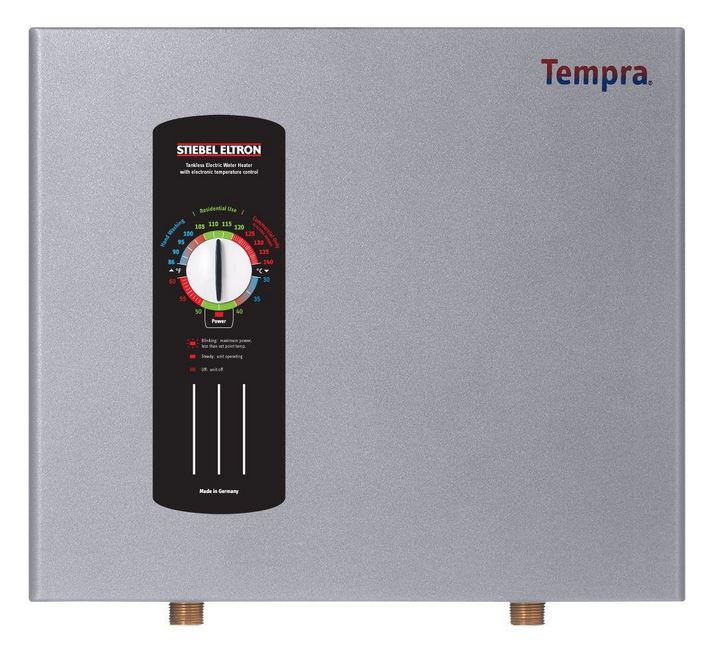
EcoSmart 27 kW 5.3 GPM Self-Modulating Electric Tankless Water Heater
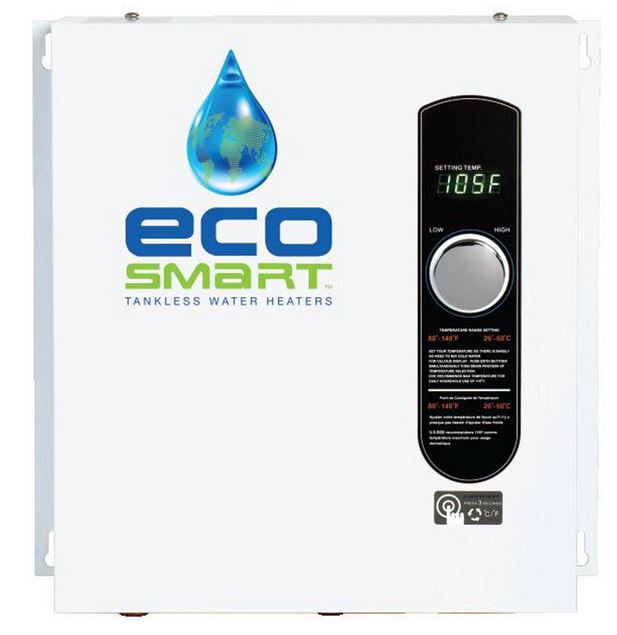
Rheem Performance 36 kW 6 GPM Self-Modulating Electric Tankless Water Heater
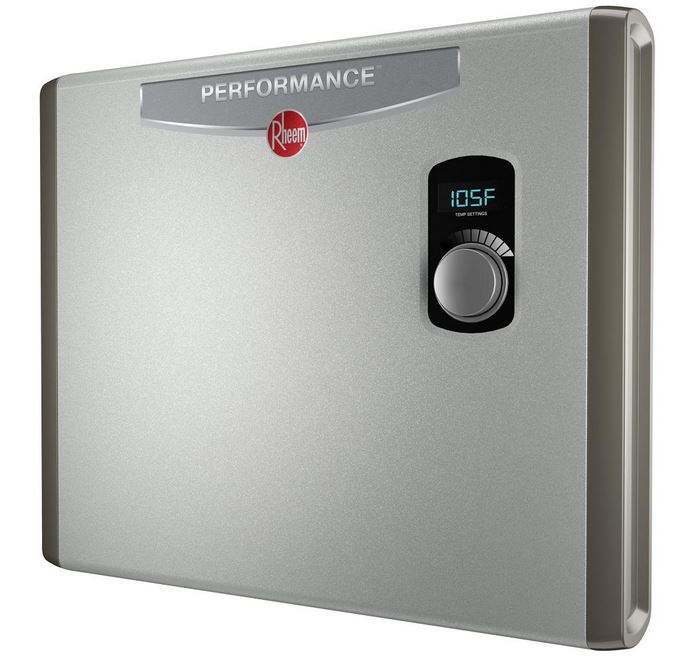
What if the electric tankless water heater is not suitable for your home?
If you the electric tankless water heater does not suit your residence, then it may be in your best interest to consider these additional tips:
- Use cold water to do your laundry and pick a detergent that is adept to it.
- Use a solar water heater if you live in a warm, sunny climate.
- If turning the tap all the way to the end is scalding your hands you should consider lowering the max water temperature. It is safe for all members of the household and will put less strain on your conventional heater to keep the water warm to a higher temperature.
- Drain a quarter of your storage tank every four months of the year. Draining a quart from your storage tank will remove the sediments built up from the minerals. Go ahead, give it a try and see how much crud you’ll encounter. Just be sure to be careful as the water will be very hot.
- Electric storage tank water heaters use heating elements that are susceptible to corrosion. Replace them, and you’ll find an improvement in efficiency.
- If you touch your tank water heater and it is too hot, it is an indication that the tank is losing insulation. You can get a special blanket that wraps around the tank from your energy provider for free that can lock in some of the insulation. If not, you can pick one up at your local hardware store. Remember to get the correct measurements in.
- Turn off the gas valve when you are on vacation. You will have to relight the pilot when you’re back, but it is an easy and effective way to save power. Use caution when dealing with the gas valve or have a professional do it for you.
Conclusion
In conclusion, electric tankless water heaters are a great way to save on the energy bill. They require a significant upfront investment, but the payback period is not as prolonged as it used to be as the system because a well-known and accepted an alternative to storage tank water heaters. However, there is still a lack of recognition among the industry, especially with contractor’s and homebuilders who may not understand or care to learn about the benefits electric tankless water heaters have to offer. With a list of suggestion and recommendations, you should now be well-equipped to find the best electric tankless water heater for your home.



